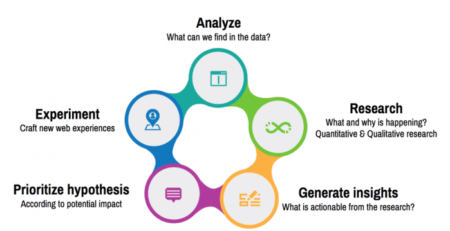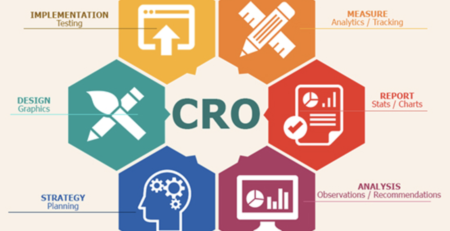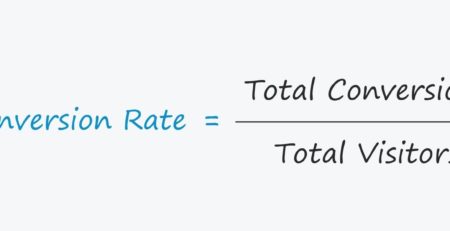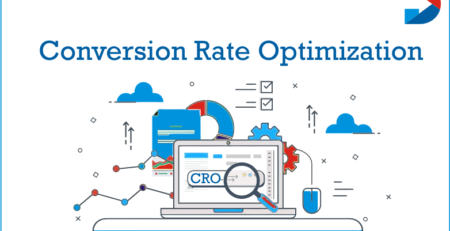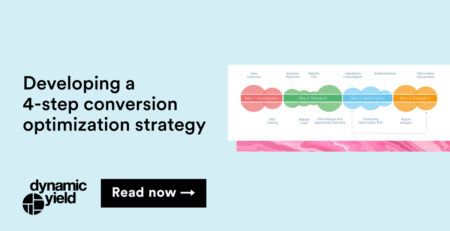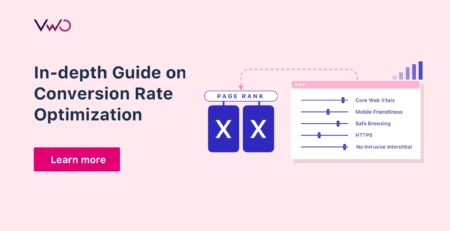A Comprehensive Checklist For Conversion Rate Optimization Success
Attention all marketers and website owners! If you’re seeking the ultimate guide to boost your website’s success through improved conversion rates, then look no further. Welcome to “A Comprehensive Checklist for Conversion Rate Optimization Success”! This step-by-step guide will equip you with the tools and strategies needed to turn visitors into loyal customers. So, get ready to dive into the exciting world of conversion rate optimization!
Picture this: your website is like a virtual store, and conversion rate optimization is the secret recipe that attracts customers and keeps them coming back for more. By following this comprehensive checklist, you’ll learn the ins and outs of optimization techniques that drive tangible results. From crafting compelling calls-to-action to analyzing user behavior, we’ve got you covered.
Don’t worry if you’re new to the world of optimization. This guide is designed to be simple and easy to understand, perfect for marketers of all experience levels. Get ready to embark on a journey toward maximizing your website’s potential and achieving conversion rate optimization success like never before. Let’s get started!
1. Analyze your website’s user experience and identify areas for improvement.
2. Optimize your website’s load speed to reduce bounce rates.
3. Create compelling and concise call-to-action buttons.
4. Implement A/B testing to evaluate different design and copy variations.
5. Use persuasive copywriting techniques to engage your audience.
By following these steps, you’ll increase your conversion rates and drive more success to your online business.
A Comprehensive Checklist for Conversion Rate Optimization Success
Welcome to our comprehensive checklist for conversion rate optimization success. In this article, we will provide you with a step-by-step guide to increase your conversion rates and boost the success of your online business. Whether you’re a small start-up or an established company, optimizing your conversion rate is essential for driving revenue and achieving your business goals. With this checklist, you’ll have all the tools and strategies you need to improve your website’s performance and maximize your conversions.
Setting Clear Goals
Before diving into the optimization process, it’s crucial to define clear goals. What do you want to achieve with your conversion rate optimization efforts? Are you looking to increase sales, generate more leads, or improve user engagement? Clearly defining your goals will help you focus your efforts and measure the success of your optimization strategies. It’s important to set achievable and measurable goals that align with your overall business objectives.
Once you have identified your goals, you can start analyzing your current conversion rate and gathering relevant data to benchmark against. This will allow you to track your progress and determine the effectiveness of your optimization efforts. Use analytics tools to gather data on key metrics such as bounce rate, average session duration, and conversion funnel drop-off points. This data will provide valuable insights into areas that need improvement and help you prioritize your optimization tasks.
Remember, setting clear goals and analyzing data are ongoing processes. Continuously monitor your website’s performance and adapt your strategies based on the insights you gain. Conversion rate optimization is an iterative process, and it requires constant testing and refinement to achieve optimal results.
1. Conducting a Comprehensive Website Audit
The first step in your conversion rate optimization journey is to conduct a thorough website audit. This involves evaluating various aspects of your website, including design, user experience, navigation, and content. Start by reviewing your website’s overall design and layout. Ensure that it aligns with your brand identity and is visually appealing to your target audience.
Next, thoroughly analyze the user experience (UX) of your website. Is it easy for visitors to navigate and find what they’re looking for? Are there any usability issues that might be hindering conversions? Conduct user testing or employ heat mapping tools to gain valuable insights into how visitors interact with your website. This will help identify any pain points or barriers to conversion that need to be addressed.
Another important aspect of your website audit is the evaluation of your content. Is your messaging clear, persuasive, and compelling? Does it effectively communicate the value proposition of your products or services? Review your landing pages, product descriptions, and call-to-actions to ensure they are optimized for conversion. Make any necessary changes or improvements based on your findings.
2. Streamlining the Conversion Funnel
A conversion funnel refers to the step-by-step journey that a visitor takes on your website before completing a desired action, such as making a purchase or filling out a lead form. Streamlining the conversion funnel is critical for increasing your conversion rates. Start by mapping out your conversion funnel and identifying any potential drop-off points.
Optimize each step of the conversion funnel to minimize friction and maximize user engagement. Ensure that your landing pages are targeted and relevant, guiding visitors towards the desired action. Simplify the checkout or lead form process by reducing the number of required fields and providing clear instructions. Implement trust symbols, such as security badges or customer testimonials, to instill confidence in your visitors.
A/B testing can be a powerful tool for optimizing your conversion funnel. Test different variations of your landing pages, forms, and call-to-actions to identify the most effective combination. Use analytics to track the performance of each variation and make data-driven decisions to improve your conversion rates.
3. Optimizing Website Loading Speed
Website loading speed is a critical factor in conversion rate optimization. Research shows that a one-second delay in page load time can result in a 7% reduction in conversions. Slow-loading websites can lead to high bounce rates and frustrated visitors, ultimately impacting your bottom line.
Optimize your website’s loading speed by optimizing images, minifying code, utilizing caching techniques, and leveraging content delivery networks (CDNs). Conduct regular performance tests and monitor your website’s loading speed to ensure it meets industry standards. Consider mobile optimization as well, as mobile traffic continues to increase and mobile users have even less patience for slow-loading websites.
Remember that optimizing website loading speed is an ongoing process. Regularly check for speed issues and make the necessary optimizations to provide the best user experience possible.
4. Implementing Effective Call-to-Actions
A call-to-action (CTA) is a crucial element in driving conversions. A well-designed and strategically placed CTA can significantly impact your conversion rates. When crafting your CTAs, focus on clarity, urgency, and relevance. Use action verbs and concise language to clearly communicate the desired action. Create a sense of urgency by incorporating time-limited offers or highlighting limited stock availability.
Experiment with different CTA designs, colors, and placements to find the most effective combination. A/B test your CTAs to gather data on click-through rates and conversion rates. Analyze the results to identify the highest-performing CTAs and optimize accordingly.
Remember to regularly review and update your CTAs to keep them fresh and aligned with your marketing goals. Consider conducting periodic CTA audits to ensure they are still effective and relevant.
Key Takeaways
2. Improve website load time for better user experience.
3. Use clear and compelling calls-to-action.
4. Optimize landing pages for mobile devices.
5. Test and analyze different elements to identify what drives conversions.
Frequently Asked Questions
Welcome to our comprehensive guide on Conversion Rate Optimization (CRO). Below, you’ll find answers to some of the most commonly asked questions about achieving success in CRO.
1. Why is conversion rate optimization important for my business?
Conversion rate optimization is crucial for your business because it directly affects your bottom line. By improving the percentage of website visitors who convert into customers or take the desired action, you can increase your revenue and maximize the return on investment from your marketing efforts. It helps you make the most out of the traffic you already have, making your marketing efforts more cost-effective.
A well-executed CRO strategy enables you to understand your customers better, improve user experience, and build trust and credibility. It allows you to identify bottlenecks in your conversion funnel and optimize them for better results. Ultimately, it helps you achieve higher conversion rates, increase sales, and grow your business.
2. What are the key elements of a comprehensive conversion rate optimization checklist?
A comprehensive CRO checklist should cover various aspects of your website and marketing strategy. Here are some key elements to include:
1. Clear and compelling calls to action: Ensure your website has clear instructions for visitors and compelling reasons to take the desired action.
2. User-friendly website design: Optimize your website’s layout, navigation, and overall design to provide a seamless user experience.
3. Responsive and mobile-friendly design: With the majority of internet users browsing on mobile devices, ensure your website is mobile-friendly and responsive across all devices.
4. Page load speed optimization: Improve your website’s loading speed to prevent visitors from leaving due to slow loading times.
5. A/B testing and experimentation: Continuously test different elements of your website to identify what works best and optimize accordingly.
6. Analyzing user behavior: Utilize tools to track and analyze user behavior to gain insights and make data-driven optimization decisions.
3. How can I determine which elements of my website need to be optimized for better conversion rates?
The first step in identifying which elements of your website need optimization is to analyze your data and conduct user research. Here are a few methods to help you determine areas for improvement:
1. Google Analytics: Analyze your website’s key metrics, such as bounce rate, average time on page, and conversion funnels to identify areas with high drop-off rates.
2. Heatmaps and click tracking: Use tools that provide visual representations of where users are clicking, scrolling, and interacting on your website to identify areas of interest and areas that are being overlooked.
3. User surveys and feedback: Gather feedback from your website visitors through surveys and user testing to understand their pain points and areas of frustration.
4. Conversion funnel analysis: Analyze each step of your conversion funnel to identify areas where users may be dropping off or experiencing friction.
By combining these methods, you can gain valuable insights into your website’s performance and identify specific elements that need optimization for better conversion rates.
4. What are some best practices for conducting A/B testing in conversion rate optimization?
When conducting A/B testing for conversion rate optimization, it’s important to follow some best practices to ensure accurate and reliable results:
1. Set clear goals: Clearly define the goals of your A/B tests to measure the impact on specific conversion metrics.
2. Test one element at a time: Focus on testing one element at a time to accurately determine its impact on conversion rates.
3. Gather a significant sample size: Ensure you have a sufficient number of participants in each test variation to draw statistically significant conclusions.
4. Run tests for an appropriate duration: Run your A/B tests for a long enough period to account for daily and weekly variations in user behavior.
5. Analyze results and make data-driven decisions: Carefully analyze the results of your A/B tests and use the insights gained to inform your optimization decisions.
By following these best practices, you can effectively conduct A/B tests and make informed decisions to optimize your website for better conversion rates.
5. How often should I conduct conversion rate optimization efforts?
Conversion rate optimization is an ongoing process, rather than a one-time task. To ensure consistent improvements in your conversion rates, it’s recommended to conduct CRO efforts regularly. The frequency of optimization depends on various factors, including your website’s traffic volume, the complexity of your conversion funnels, and your resources.
As a general guideline, aim to conduct CRO efforts quarterly or at least twice a year. This allows sufficient time to collect data, analyze the results, implement changes, and measure the impact. However, if you have high traffic volumes or frequently changing user behavior, more frequent optimization efforts may be necessary.
Remember, maintaining a culture of continuous improvement and regularly monitoring your conversion rates can lead to sustained growth and success for your business.
What is Conversion Rate Optimization? | CRO Basics and Tips for Success
Summary
So, to sum it all up, optimizing your website for more conversions is super important. First, make sure you know your audience and what they want. Then, improve your website’s design and make it user-friendly. Test different elements and see what works best. Keep analyzing your data and make changes accordingly. And remember, always focus on providing value and a great experience for your visitors.



